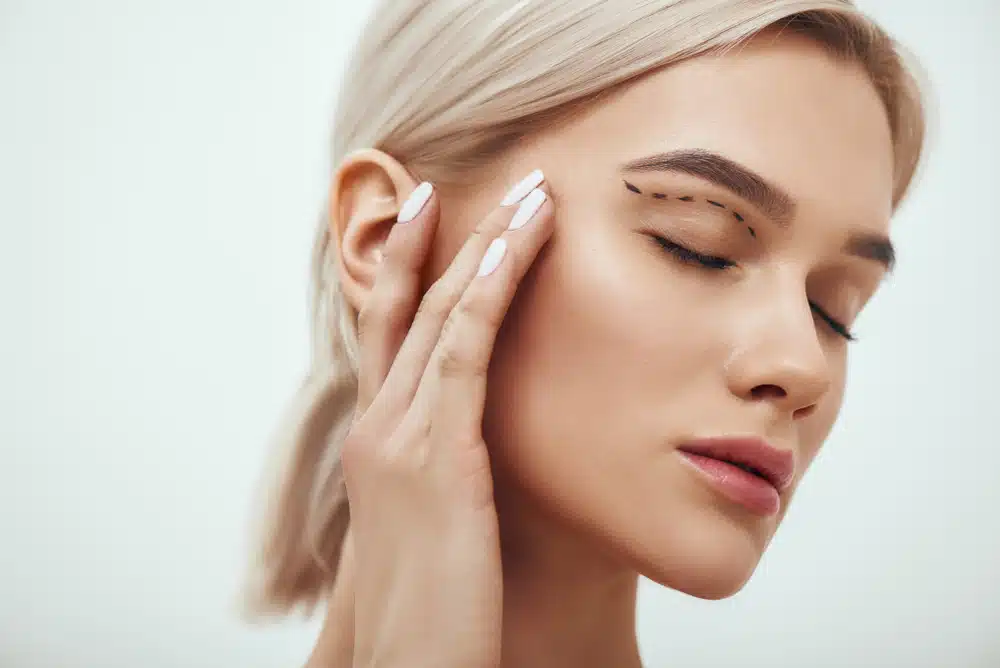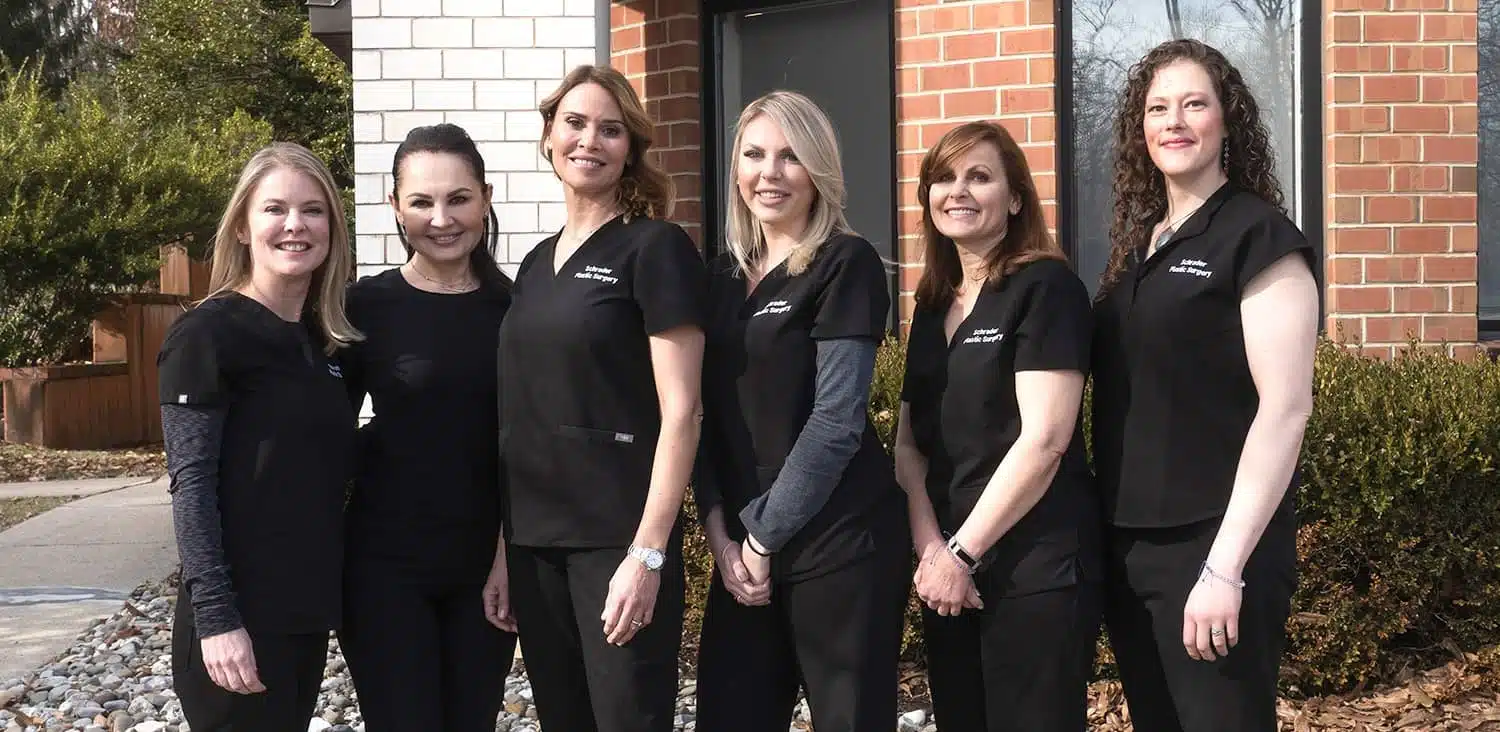How long for blepharoplasty scars to heal? It’s a question many ask when considering eyelid surgery. Whether you’re seeking functional improvements or aesthetic enhancements, understanding the healing journey is crucial. Blepharoplasty offers life-changing results, but the recovery process, especially scar healing, is a topic of interest for many patients.
The process can seem overwhelming, but with the right care and expert guidance, scar healing can be optimized for seamless results. Let’s explore everything you need to know about blepharoplasty scars and how to ensure the best recovery experience.

How Long Does it Take For Eyelid Surgery Scars to Heal?
Blepharoplasty recovery generally takes around 6 to 8 weeks, with initial swelling and redness subsiding in this period. However, it’s important to note that scars can take longer to fade completely. For most patients, achieving mature, less visible scars can take anywhere from 6 months to a year, depending on individual healing factors.
Key Factors That Influence Blepharoplasty Scar Healing
The healing of blepharoplasty scars is influenced by several factors, many of which are unique to each individual. By understanding these factors, patients can take steps to optimize their recovery process and minimize the visibility of scars.
Skin Elasticity and Age of the Patient
Skin elasticity plays a crucial role in how well scars heal. Younger patients often have more elastic skin, which can recover more effectively, leading to less noticeable scars. However, age isn’t the only determining factor—genetics and overall skin health also contribute significantly.
Skill of the Surgeon and Technique Employed
The expertise of the surgeon performing the procedure is paramount. A skilled surgeon, like Dr. Nicole Schrader, ensures precise incision placement, minimal tissue damage, and meticulous stitching techniques, all of which contribute to better scar outcomes. Choosing an experienced professional can make a world of difference.
How Well the Recovery Process Goes
Post-surgical care is critical to the healing process. Adhering to the surgeon’s recovery guidelines, such as using prescribed topical treatments, avoiding sun exposure, and maintaining a healthy lifestyle, can greatly influence the final appearance of scars. Patients who are diligent in their recovery efforts often experience better results.


Trust your face to a specialist
My Goal is to create Harmony, Balance & true Beauty
Best Practices to Reduce Scars from Blepharoplasty
Reducing scars from blepharoplasty requires a combination of proper care and avoiding common pitfalls. By following best practices, patients can significantly improve their recovery process and minimize the appearance of scars.
Things to Do
- Follow your surgeon’s post-operative care instructions carefully.
- Keep the surgical area clean and moisturized with recommended products.
- Use silicone gel or sheets to promote healing and reduce scar visibility.
- Apply sunscreen with a high SPF to protect the scars from UV damage.
- Maintain head elevation while sleeping to minimize swelling.
- Eat a balanced diet rich in vitamins and minerals, especially vitamin C and zinc, to support healing.
Things to Avoid
- Avoid exposing scars to direct sunlight or tanning beds.
- Refrain from applying makeup near the surgical area until fully healed.
- Do not pick or scratch at the scabs or scar tissue.
- Avoid strenuous physical activity that could strain the surgical area.
- Stay away from smoking or excessive alcohol consumption, as they can hinder healing.
- Do not use unapproved creams or treatments without consulting your surgeon.
Topical Treatments for Blepharoplasty Scar Healing
Reducing the appearance of blepharoplasty scars often begins with topical treatments that are easy to use and highly effective. These options help hydrate, flatten, and lighten scars, promoting better overall healing. Below are some of the most commonly recommended topical treatments for optimal scar care.
Silicone Gel and Sheet Applications
Silicone gel is a proven option for reducing scar visibility. It forms a protective barrier over the skin, locking in moisture and promoting healing. Silicone sheets, which provide consistent coverage, can also be used to hydrate the scar effectively. Regular application ensures optimal results.
Steroid Creams for Hypertrophic Scars
For patients prone to hypertrophic scars, steroid creams are often recommended. These creams work by reducing inflammation and excess collagen production, helping to flatten and soften the scar tissue. Due to the sensitivity of eyelid skin, a healthcare provider should supervise the use of steroid treatments.
Natural Remedies and Their Effectiveness
Natural remedies, such as aloe vera, onion extract, and vitamin E, are popular for their skin-nourishing properties. While they may not work as quickly as medical-grade treatments, they can support overall skin health and reduce redness. Results may vary, so it’s essential to choose products compatible with your skin type.
Blepharoplasty before & after photos
* All patients are unique and individual results may vary.
Alternative Treatments for Blepharoplasty Scar Management
When topical treatments aren’t enough, alternative treatments offer additional options for managing blepharoplasty scars. These methods address deeper layers of the skin and provide advanced solutions to minimize scar visibility and enhance overall results.
Laser Resurfacing
Laser resurfacing is a popular method for managing scars after blepharoplasty, targeting both surface imperfections and underlying tissue. Ablative lasers can remove damaged skin layers to reveal smoother skin beneath, while non-ablative lasers stimulate collagen production to enhance skin elasticity and reduce the appearance of scars over time.
This treatment can also help reduce redness and discoloration by addressing blood vessels that contribute to these issues. Most patients require multiple sessions to see optimal results, and proper aftercare—such as avoiding sun exposure and using physician-recommended moisturizers—is essential to ensure effective healing and long-term benefits.
Microneedling
Microneedling is another effective option for improving blepharoplasty scars by stimulating the skin’s natural healing process. During this treatment, fine needles create controlled micro-injuries in the skin, promoting the production of collagen and elastin. This process smooths out scars and enhances the skin’s texture around the surgical site.
Microneedling is highly customizable, allowing professionals to adjust the depth of the needles depending on the severity of the scar and the delicate nature of eyelid skin. Post-procedure care, including avoiding sun exposure and applying soothing moisturizers, is crucial for a successful recovery. Multiple sessions are often necessary for the best outcomes.
Considering Surgical Revision
For scars that remain highly visible or problematic despite other treatments, surgical revision may be an option. This procedure involves carefully removing or reorienting the scar tissue to create a more refined appearance. Surgical scar revision is typically considered once the scar has fully matured, usually after 6 to 12 months.
Consulting with an experienced surgeon is essential to determine if surgical revision is the right solution for your needs. The procedure is tailored to the individual and can significantly improve the appearance of stubborn scars, helping patients achieve their desired aesthetic goals.
Choosing the Best Eyelid Surgeon for Your Procedure
The success of your blepharoplasty and the visibility of any resulting scars depend heavily on the skill and experience of the surgeon you choose. Opting for a highly qualified facial plastic surgeon ensures precision during the procedure, minimizing the risk of complications and reducing the likelihood of needing corrective surgeries later.
Dr. Nicole Schrader is a double board-certified facial plastic surgeon who exclusively focuses on facial procedures, including blepharoplasty, laser skin resurfacing, microneedling, and scar revision. Her specialized expertise and years of experience make her the premier choice for patients seeking exceptional results in New Jersey. With a meticulous approach and a commitment to patient care, Dr. Schrader helps her patients achieve natural-looking outcomes while prioritizing their safety and satisfaction.
If you’re considering blepharoplasty, trust Dr. Schrader to guide you through every step of the process. Schedule a consultation today.


